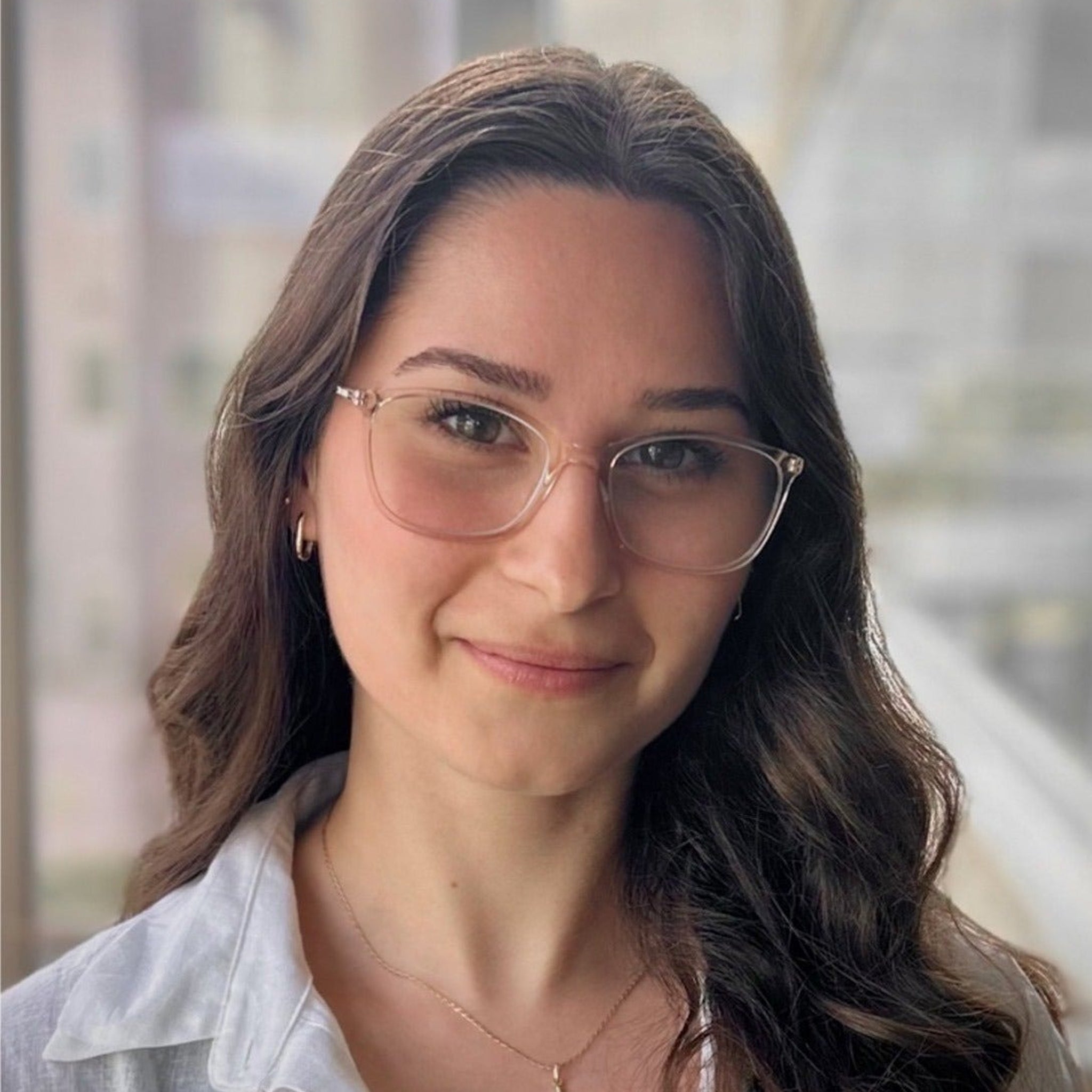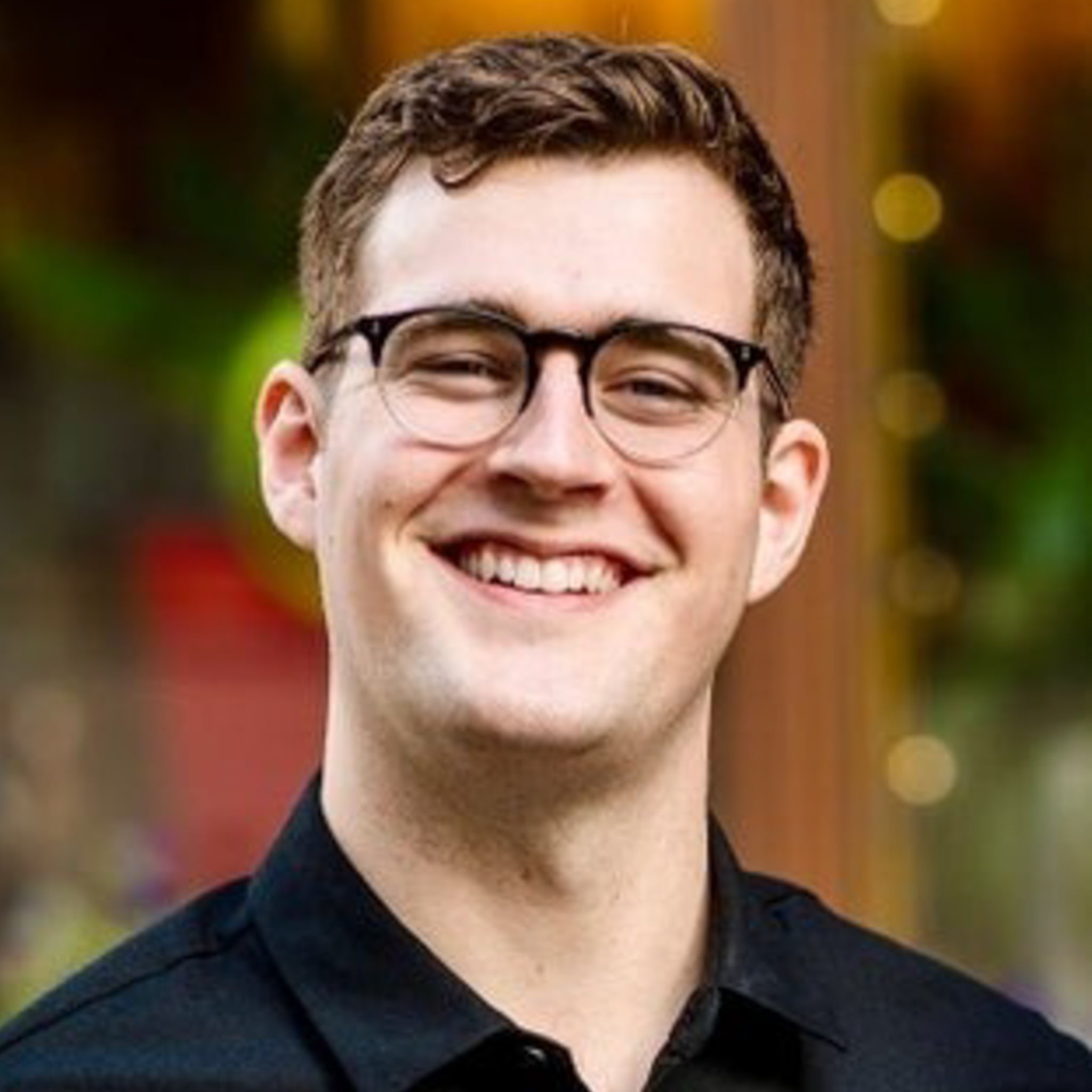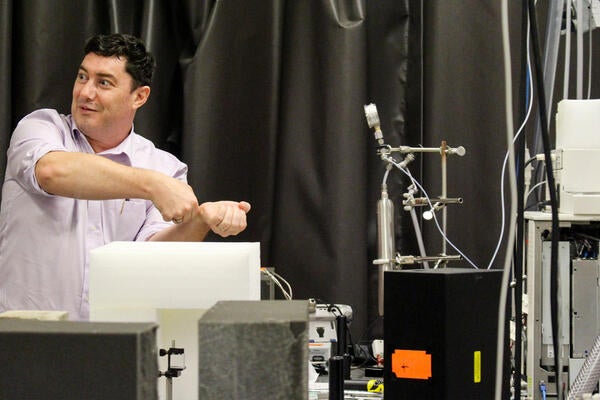
Building the perfect quantum camera
Vanier scholars collaborate to reach new levels of precision and reveal a new world of possibilities

Vanier scholars collaborate to reach new levels of precision and reveal a new world of possibilities
By Jack Weatherston Faculty of Engineering
Sarah Odinotski (PhD in progress)
PhD student, Electrical and Computer Engineering
> Institute for Quantum Computing
> Vanier Scholar
Imagine a camera that doesn’t miss anything, one sensitive enough to detect individual photons of light. That’s the goal of Sarah Odinotski and Jack DeGooyer, two PhD researchers from the Institute for Quantum Computing and Department of Electrical and Computer Engineering. The potential of their ambitious project was underlined when both were awarded prestigious Vanier Canada Graduate Scholarships for their distinct but complementary research.
Odinotski is part of the Quantum Photonic Devices Laboratory team, led by Dr. Michael Reimer. Her work focuses on designing sensors capable of detecting single photons, the smallest unit of light. By designing intricately patterned “metamaterials,” Odinotski aims to capture individual photons and convert them into detectable electronic signals.
“If you throw a snowball off the side of a cliff, it'll start rolling and will create an avalanche,” she explains. “The structures within our metamaterial are capable of efficiently generating one electron from the single absorbed photon. It can then take that electron and multiply it into millions of electrons to create an ‘avalanche’ of current.”

Jack deGooyer (PhD in progress)
PhD student, Electrical and Computer Engineering
> Institute for Quantum Computing
> Vanier Scholar
Working in the same laboratory, deGooyer hopes to build a fully functioning camera made up of these precise sensors. To achieve this, he is developing microcircuits that can process and monitor the weak signals generated by the sensors. “What I’m doing is making scales the width of a human hair,” deGooyer says. “The scales count electrons as they’re passing by.” This process is key to scaling up individual sensors into a system that can generate detailed images with near-perfect sensitivity.
From quantum computing to astronomy, the applications of this technology are incredibly diverse and consequential. One of the team’s motivations is to use their cameras for medical imaging. They hope their system will allow more accurate detection of cancerous cells for faster diagnosis and treatment.
The exciting possibilities of this technology were recognized by the two Vanier awards, which highlight the value of collaboration across research disciplines to enable new discoveries. “It’s an affirmation of the research and the different philosophies that both Sarah and I bring to the project,” deGooyer says.

Read more
Waterloo’s new Free Electron Laser will reveal hidden details in biological samples, enhancing our understanding of treatments and therapies

Read more
Using menstrual products as a diagnostic tool could replace invasive Pap smears with a non-invasive alternative

Read more
PhD student’s research examines how industrial pollution may be affecting northern First Nations communities
The University of Waterloo acknowledges that much of our work takes place on the traditional territory of the Neutral, Anishinaabeg, and Haudenosaunee peoples. Our main campus is situated on the Haldimand Tract, the land granted to the Six Nations that includes six miles on each side of the Grand River. Our active work toward reconciliation takes place across our campuses through research, learning, teaching, and community building, and is co-ordinated within the Office of Indigenous Relations.